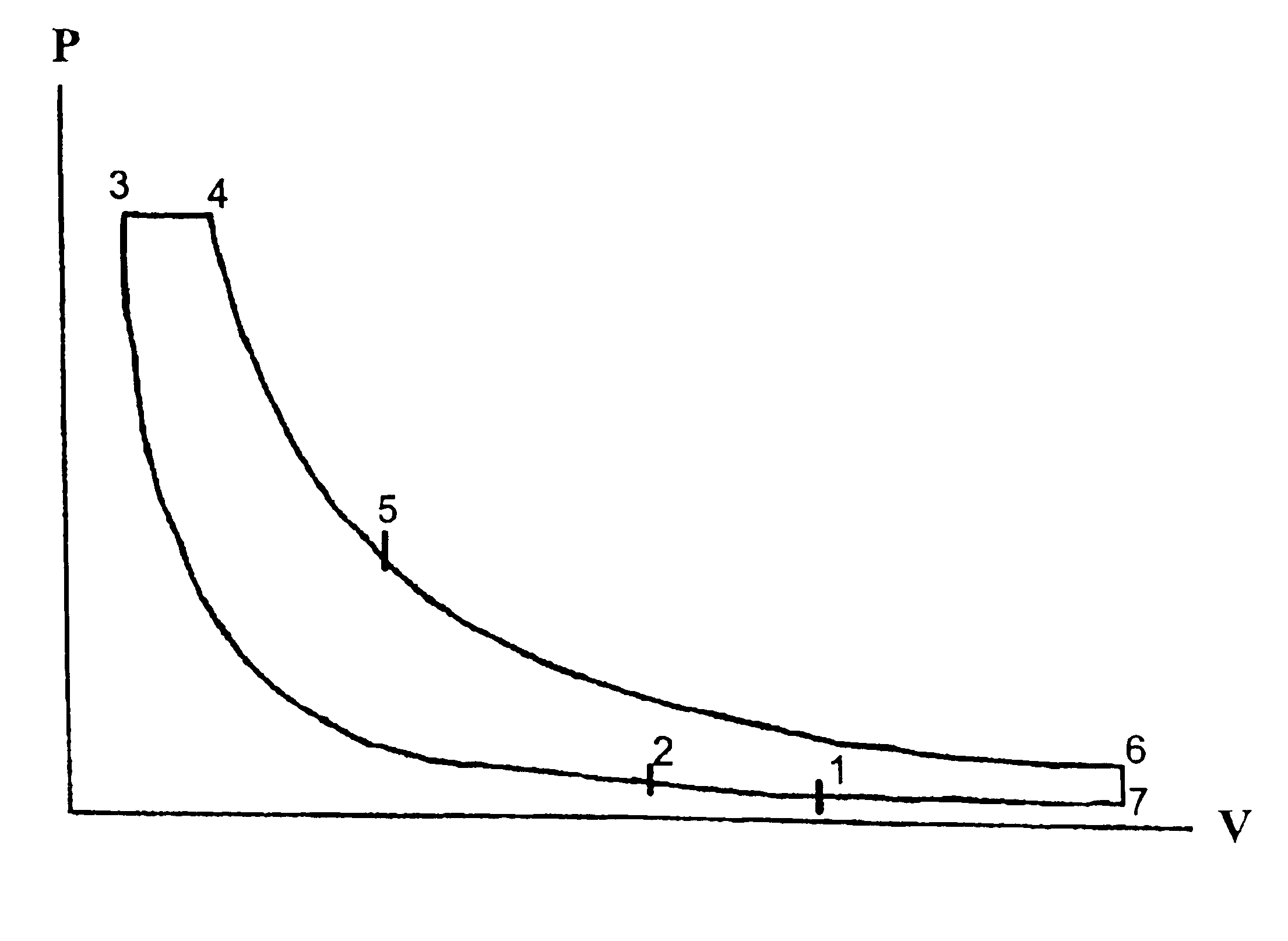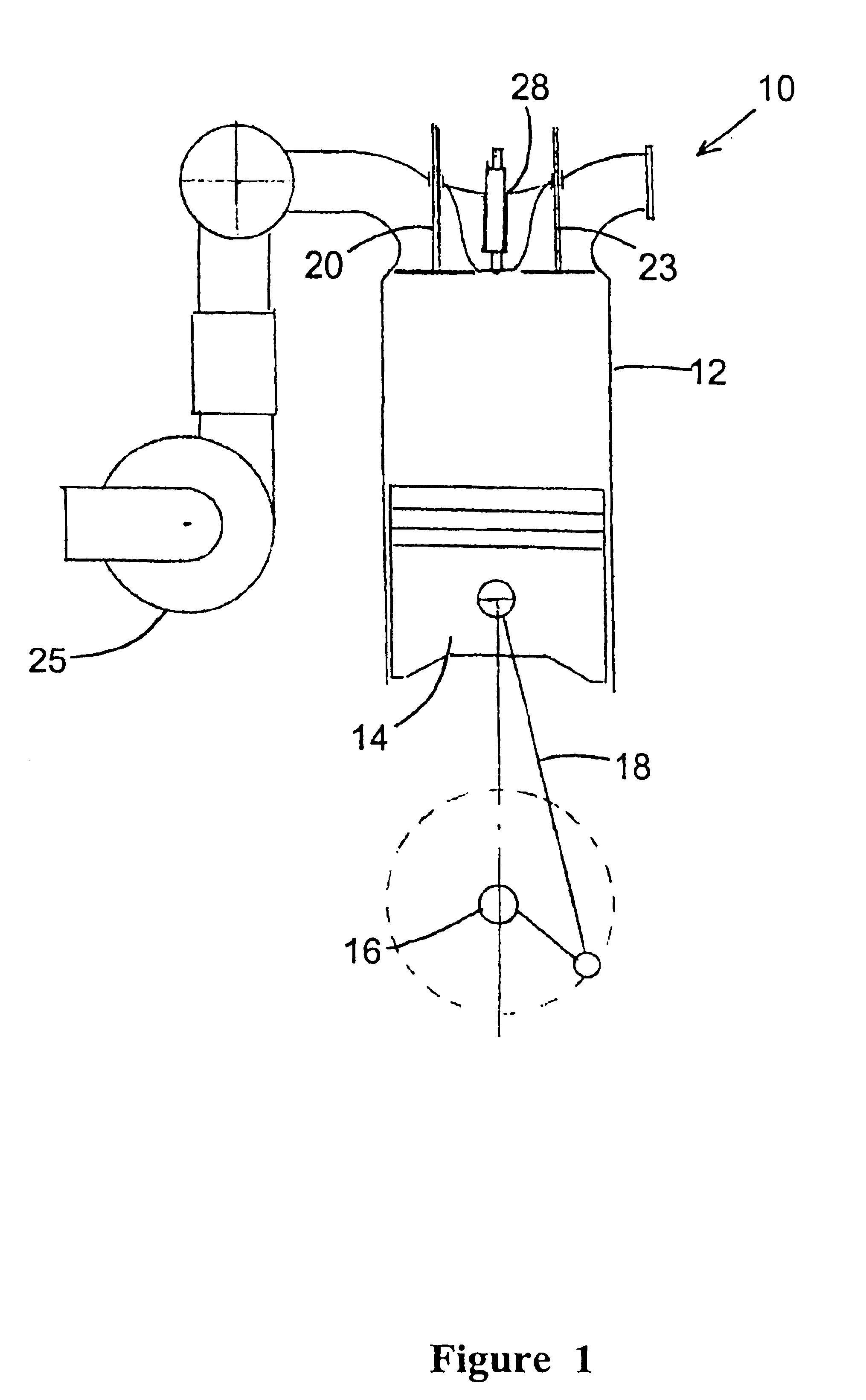Over expanded limited-temperature cycle two-stroke engines
a limited-temperature cycle, two-stroke technology, applied in combustion engines, machines/engines, electric control, etc., can solve the problems of generating engine friction losses, reducing engine volumetric efficiency, etc., to reduce the level of nox formed, prolong/prolong the cycle period, reduce post-combustion temperatures
- Summary
- Abstract
- Description
- Claims
- Application Information
AI Technical Summary
Benefits of technology
Problems solved by technology
Method used
Image
Examples
case 2
s Case 1 with T*=3600 R and V5=4
At point 5, V5=4, P5=P4V4 / V5=369 (constant temperature) T5=T4(V4 / V5)k−1=2766, and Q4-5=(3600−2766)0.171=142.6 Btu / lbm. From point 5 to point 6 is an expansion process with an expansion ratio of 23.4 / 4=5.85. At point 6, P6=31.1, T6=1776. At point 7, P7=14.7, V7=23.4, and T7=839, Q6-7=−160.2, and Q7-1=−67. The total heat addition=599.1 Btu / lbm and total heat removal=227.2 Btu / lbm. Therefore, the cycle efficiency=62%.
Assume φ=1.0, Q=1280 Btu / lbm. Case 1 shows that for φ=0.36 and T*=2000 K, efficiency=66%. Case 2 shows that when φ is increased from 0.36 to 0.47, efficiency drops from 66% to 62%. Therefore, T* should be as close as possible to the threshold temperature of increased NOx formation. Cycle efficiency approaches 67% for φ being less than 0.36. These results show that it is possible to significantly reduce NOx formation within the range of practical engine output.
The above analysis is for illustration only. There are many items to be chosen, suc...
PUM
 Login to View More
Login to View More Abstract
Description
Claims
Application Information
 Login to View More
Login to View More - R&D
- Intellectual Property
- Life Sciences
- Materials
- Tech Scout
- Unparalleled Data Quality
- Higher Quality Content
- 60% Fewer Hallucinations
Browse by: Latest US Patents, China's latest patents, Technical Efficacy Thesaurus, Application Domain, Technology Topic, Popular Technical Reports.
© 2025 PatSnap. All rights reserved.Legal|Privacy policy|Modern Slavery Act Transparency Statement|Sitemap|About US| Contact US: help@patsnap.com



